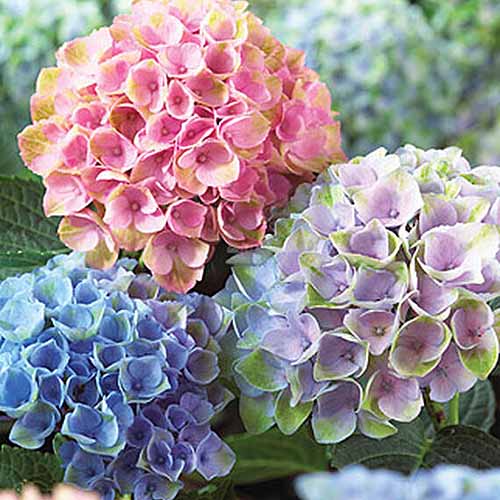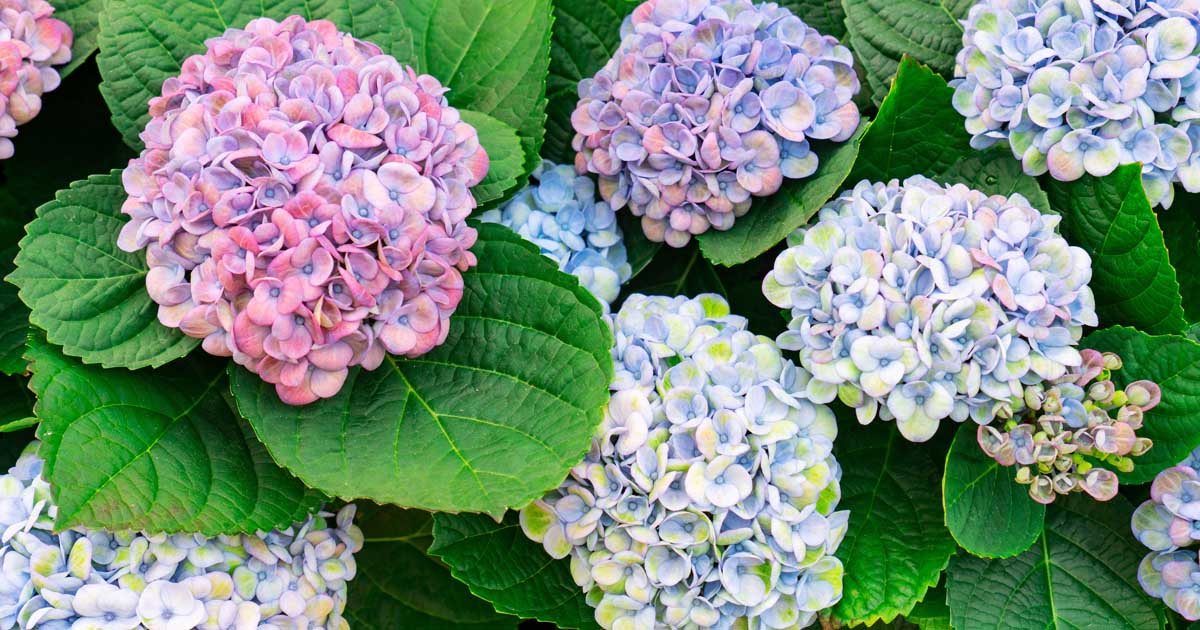5. Pruning Problems
Pruning is one of the most common contributors to a lack of blossoms. If you prune any time from autumn to late spring, you might be cutting off the growth on the old wood that would have turned into flowers.


So when exactly should you prune to avoid this problem? Do it in the summer, after the flowers have faded but before the fall hits. That leaves a small window for cutting your plant back if you want a showy display in the spring.
There’s one exception to this: you should prune off dead branches in the spring, back to the point of live growth. Dead wood is dry, snaps when you bend it, and won’t have any visible new growth.
You can also deadhead flowers after they have faded, or just leave them on the plant. If you decide to deadhead, snip the flower heads off above the first set of leaves.
If all of this seems too intimidating, don’t prune your bigleaf or oakleaf plants at all!
Also keep in mind that you aren’t the only one who might be pruning at the wrong time. As I mentioned above, deer might nibble on that fresh growth, essentially pruning it for you.
There are also cultivars out there that bloom on both old and new wood, such those in the Let’s Dance®, Endless Summer®, and Seaside Serenade® series. You won’t have to worry about this problem if you plant these.


Everlasting® ‘Revolution’
Everlasting® ‘Revolution’ is another such option that grows best in Zones 5-9.
Plants are available from Burpee.
6. Too Much Shade
Hydrangeas grow well in partial shade, but too much of it and they won’t flower.
While these plants traditionally grow wild in the understory of forests, they still receive some dappled sun in their natural habitat. If yours is planted in a spot where it isn’t receiving enough sun, you won’t see blossoms.


This is often a problem when a gardener plants their hydrangea under some trees that aren’t fully mature. As those trees grow and fill out, they block more and more sunlight from reaching the ground.
It’s easy to fail to notice this problem developing because it happens so gradually. Then, one year when your plant doesn’t send out those lovely flowers, you suddenly realize that its location has gotten shadier over time.
That isn’t the only situation that can reduce the amount of light your plants get. You might also have had a particularly cloudy spring.
If your hydrangea was blooming well in the years prior and stopped this year, check the amount of sun that’s reaching it. You can even use a meter to help you get an accurate picture.


Active Air 3-Way Meter
This Active Air 3-Way Meter from Arbico Organics measures moisture, light, and soil pH, so you can see what’s going on with your planting area.
If you planted your hydrangea within the last year or two, double-check to make sure it is receiving about three hours of sun, preferably in the morning, with protection from the afternoon rays.
Panicle types in particular need a fair amount of sun to bloom. They can even handle full sun in many climates. Oakleafs may do well in deeper shade in some zones.
7. Too Much Sun
On the other hand, too much sun can also be a problem. A plant that is hit with more sun than it likes becomes stressed, and a stressed plant may decide to skip blooming to conserve energy.


H. paniculata can handle full sun, but H. macrophylla needs part shade to thrive, especially in hot regions like Zones 8 and 9. In cooler regions, like Zones 5-7, they can be in full sun.

